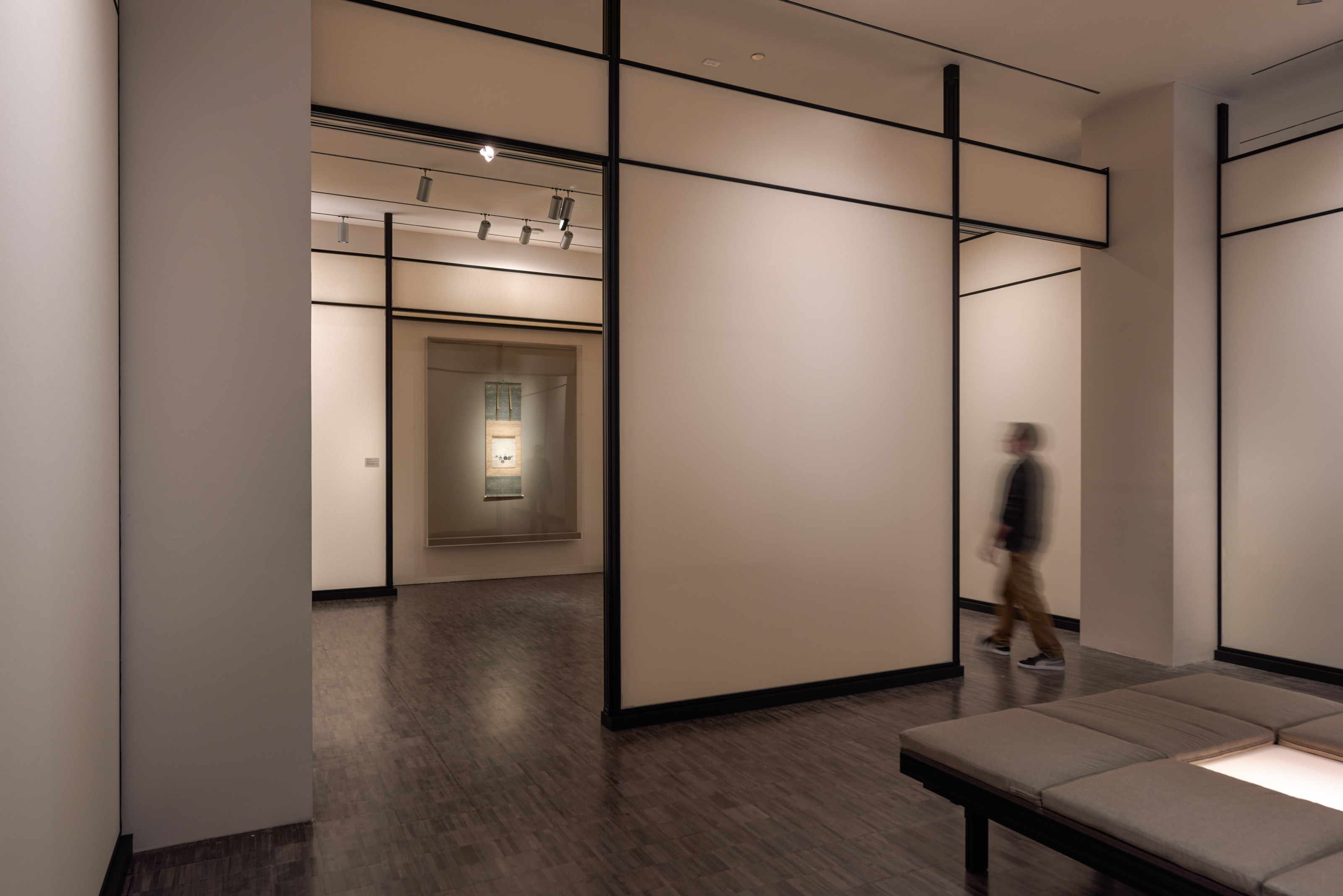Known as the “Zen Mona Lisa,” one of Japan’s most revered works of art is now on view in San Francisco—but only for the next three weeks.
Technically titled Persimmons, the 800-year-old piece is currently on display at the city’s Asian Art Museum, which offers a serene, contemplative haven for viewing it as part of the larger exhibition “The Heart of Zen.”
The ink and brush painting—created by the monk Muqi in 13th century China—is on loan to the U.S. for the first time in its history and can only be seen through Dec. 10. Its sister painting, Chestnuts, will go up on Dec. 8 and hang through Dec. 31.
The entire exhibition, in fact, consists of just these two artworks, and the installation is comprised of gentle lighting, taupe screens and a video projection of the Daitokuji Ryokoin Temple, where the paintings are typically housed.
“It enables you to calm your senses,” said Laura Allen, the museum’s senior curator of Japanese art.
Inaccessible to the general public in Japan and never having before left its Kyoto home, Persimmons is the influence for nearly every Japanese brush painting school, renowned for its tonality and simplicity. It is also credited with inspiring interest in Buddhism in the U.S. in the 20th century, said the museum’s director of communications.
“The Heart of Zen” could not be more different from the Asian Art Museum’s other show, “Takashi Murakami: Unfamiliar People—Swelling of Monsterized Human Ego,” which looks at the look at the sensory explosion of that “Superflat” Japanese artist’s work.
As the only venue to receive the artworks, this marks an unprecedented opportunity to view these renowned paintings.
The idea for the exhibition came about when the temple’s abbot visited San Francisco and was so impressed by the museum—and so overwhelmed by the suffering just outside it—that he wanted to do something to help.
“We didn’t seek to do this, but he offered,” Allen told The Standard.
The abbot, in turn, hopes to inspire compassion for those suffering from the drug and homelessness epidemics.
“In conversations with the abbot, it became clear that we could nurture empathy by sharing this pair of exceptional paintings with our city,” museum Director Jay Xu said.
While the artworks are not meditative objects—historically displayed at tea gatherings—they induce reflection, and a corner of the exhibition includes a meditation area.
The two paintings, both on scrolls that would have been unrolled during tea ceremonies, traveled across the ocean to Japan sometime in the late 1400s. With his more atmospheric and wet brushstrokes, Muqi is more revered in Japan than in his native China, where ink drawings emphasize precision.
The two paintings will overlap for three days only—Dec. 8 to 10—and the limited viewing time is an effort to protect the delicate artworks from exposure to sunlight. The glass casing which holds the paintings is lined with silica gel to control humidity.
James Cahill, professor emeritus at the University of California Berkeley, calls Persimmons the ultimate “unanalyzable” painting—before analyzing it for 30 minutes. Allen praised the painting for its enigmatic quality and highlighted its brush technique, ink values and composition.
It’s been a blockbuster season for the Asian Art Museum, fresh off the opening of its new rooftop art terrace and enjoying the overwhelming success of Takashi Murakami’s monsters.
The Heart of Zen
📍 Asian Art Museum, 200 Larkin St., SF
🗓️ Nov. 17-Dec. 31 (Persimmons on view Nov. 17-Dec.10 only)
🔗 asianart.org
